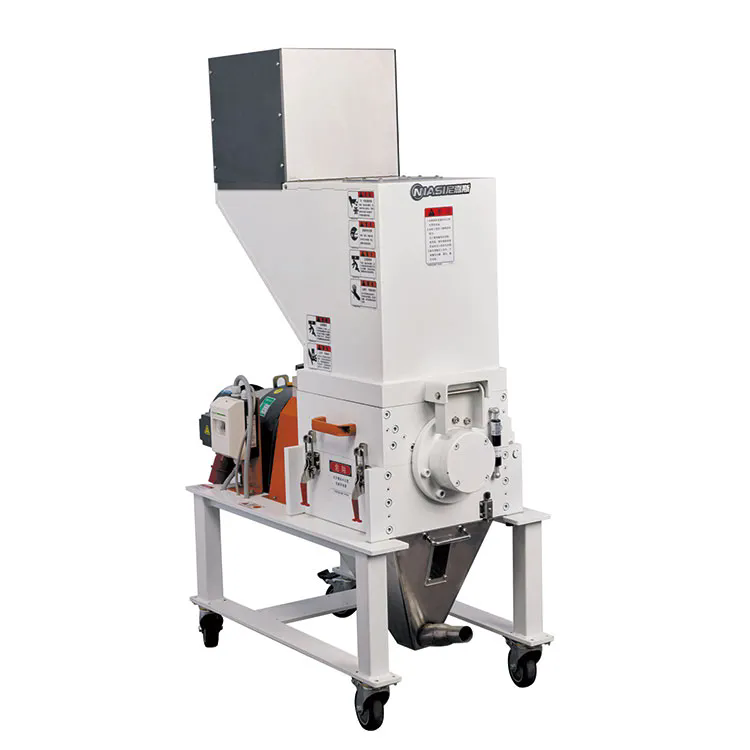Exploring the Benefits of a Slow Speed Shredder for Your Business
2024-09-18
In the world of waste management and recycling, efficiency and sustainability are paramount. One tool that has become increasingly popular for businesses looking to reduce waste, improve recycling processes, and minimize environmental impact is the Slow Speed Shredder. Unlike high-speed shredders, which operate at high revolutions per minute (RPM), slow speed shredders are designed to process materials more deliberately, offering a range of benefits. In this blog, we’ll explore what a slow speed shredder is, how it works, and why it could be the right solution for your business.
What Is a Slow Speed Shredder?
A slow speed shredder, as the name implies, operates at a lower RPM compared to traditional shredding equipment. Typically featuring two counter-rotating shafts or rotors with cutting edges, these shredders work by pulling material between the shafts and tearing it apart with controlled, powerful force.
Slow speed shredders are primarily used for processing tough and bulky materials like:
- Industrial and commercial waste
- Wood and timber
- Metals
- Plastics
- Tires and rubber
- Demolition debris
Because they operate at a lower speed, these machines reduce wear and tear on the equipment and increase its longevity. But the benefits go beyond durability.
Key Benefits of Using a Slow Speed Shredder
1. High Torque for Tough Materials
Slow speed shredders offer high torque, making them ideal for breaking down dense and difficult-to-process materials like metals and rubber. The low RPM means the shredder can apply more consistent force, enabling it to process heavy-duty materials that might jam or overload traditional high-speed shredders.
2. Reduced Noise and Dust
One of the most noticeable advantages of slow speed shredders is their quieter operation. High-speed shredding equipment tends to generate significant noise and dust, making them less suitable for indoor operations or noise-sensitive environments. Slow speed shredders, however, produce minimal dust and run at lower noise levels, improving workplace safety and comfort.
3. Energy Efficiency
Since slow speed shredders do not operate at high RPMs, they tend to consume less energy. This can result in significant savings on electricity costs, especially for businesses running shredding operations for extended periods. By using a slow speed shredder, businesses can process large volumes of waste with lower energy consumption, contributing to both cost savings and sustainability.
4. Low Maintenance and Durability
The slower speed and robust design of these shredders lead to reduced wear on parts. Components like blades, bearings, and motors last longer when operating at lower speeds, which means fewer breakdowns and maintenance costs. The machine’s longevity is a significant advantage for companies that need continuous and reliable shredding capabilities.
5. Versatile Applications
Slow speed shredders are incredibly versatile. They can handle a wide variety of materials, making them ideal for industries like construction, manufacturing, waste management, and recycling. Whether you're dealing with timber, metals, plastics, or mixed materials, slow speed shredders are designed to handle diverse waste streams efficiently.
6. Controlled Shredding Process
Unlike high-speed shredders that may create inconsistent particle sizes, slow speed shredders allow for more precise and controlled shredding. This means businesses can better control the output size of shredded material, which can be critical for recycling operations or preparing materials for further processing.
How a Slow Speed Shredder Can Benefit Specific Industries
1. Construction and Demolition
In construction and demolition, bulky waste such as concrete, metal, and wood needs to be processed efficiently. Slow speed shredders can handle this type of material with ease, ensuring that waste is reduced in volume, recycled, or properly disposed of.
2. Waste Management and Recycling
For waste management companies, handling mixed waste streams can be challenging. Slow speed shredders are highly effective in breaking down different types of materials in a single pass, allowing for easier sorting and recycling.
3. Manufacturing
Manufacturing plants that generate scrap materials like plastic, metal, or rubber benefit from slow speed shredders to process and recycle their waste. This reduces the amount of waste sent to landfills while providing a steady supply of reusable materials.
Conclusion
A slow speed shredder offers an ideal solution for businesses looking to improve their waste processing and recycling efforts. Its combination of high torque, energy efficiency, durability, and versatility makes it a valuable asset across a wide range of industries. Whether you're in construction, manufacturing, or waste management, a slow speed shredder can help streamline operations, reduce costs, and promote sustainability.
If you're considering upgrading your shredding equipment or looking for a more efficient way to handle tough materials, exploring slow speed shredders could be the next step in optimizing your waste management strategy.



